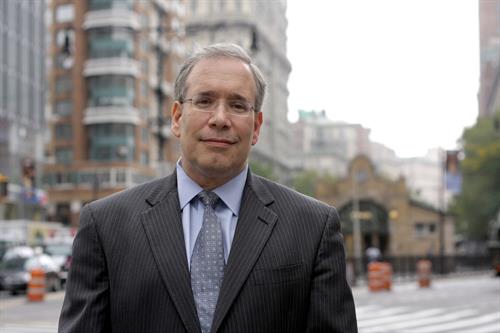
COMPTROLLER STRINGER REPORT: SOARING COSTS CREATE BARRIER TO CITIZENSHIP FOR 670,000 IMMIGRANT NEW YORKERS
Citizenship application fee has spiked by nearly 500 percent since 1989 after adjusting for inflation
Securing citizenship can boost annual income by up to $3,200
New York City Comptroller Scott M. Stringer recently released a report detailing how the soaring cost of naturalization coupled with recent City cuts to adult literacy classes and limited access to affordable legal services have created a barrier to citizenship for the nearly 670,000 immigrant New Yorkers who are eligible to apply.
“With costs that can reach into the thousands of dollars, our citizenship process has become too expensive for hundreds of thousands of New Yorkers,” Comptroller Stringer said. “High fees and diminished access to English instruction and affordable legal services are throwing up roadblocks to naturalization for this generation of immigrants. Becoming a citizen is an integral part of the American experience. Every New Yorker deserves a fair and fighting chance to make it in this City and it’s the job of government to break down barriers to help those who have lived and worked here make citizenship an attainable goal.”
Since 1989, the cost of applying for citizenship through the U.S. Citizenship and Immigration Services (USCIS) has spiked from $60 to $680—an increase of over 500 percent, even after accounting for inflation.
In addition, other costs associated with applying for citizenship can result in a total price tag well into the thousands, including paying for:
- English classes: With few exceptions, federal law requires would-be citizens to pass a test showing English language proficiency, which is determined by the applicant’s ability to read, write, speak and understand English. As a result, many applicants seek out English as a Second Language (ESL) classes, which typically costs around $400 a week for group lessons.Although the New York Public Library expanded seats for free English classes by 300 percent over the last three years, several branches have reported having to turn away applicants, unable to meet the high demand. Furthermore, last year’s City Budget cut 6,000 adult literacy seats for ESL and civics classes in New York City, despite the booming demand for this service.
- Legal fees: Many immigrants—particularly those who do not speak English—seek legal advice from immigration lawyers during the naturalization process. In New York City, immigration law firms usually charge between $100 and $300 for a one-time consultation and an additional $1,200 to $1,500 for help filling out the relevant paperwork and preparing the application package
These high costs present hurdles that limit the ability of immigrants to fully realize their economic potential and place a significant drag on New York City’s economy. The report noted that:
- Immigrants who naturalize in New York City experience increases in annual incomes of approximately $1,975 to $3,265, boosting wages and bolstering tax revenue for the City.
- Many would-be citizens cite financial barriers as the greatest obstacle to naturalization. In fact, immediately following the fee increase in 2008, the number of citizenship applications plunged from nearly 1.4 million in 2007 to just over 500,000 in 2008.
Comptroller Stringer’s report makes a series of recommendations at the federal and local level that are designed to combat the high cost of citizenship:
Federal:
- The federal government should dedicate additional resources to USCIS’s budget, with an eye toward reducing or even eliminating application fees for naturalization. Currently, 95 percent of USCIS’s operating budget is paid for through fees alone, putting the burden on low-income immigrant families who can least afford to pay.
- USCIS should conduct more comprehensive fee studies and improve the waiver process. The agency should examine its fee structure more frequently to determine if it can lower fees or offer partial waivers. In addition, USCIS should improve the waiver process, which has been found to be fraught with inconsistencies and errors.
- USCIS should research alternative payment options. In September 2015, USCIS began accepting credit cards as a valid form of payment for the first time. USCIS should take the next step and launch an installment plan to allow low-income immigrants to pay the $680 in costs over multiple payments.
Local:
- Create public-private partnerships to offer more “on-site” citizenship assistance programs in industries with large immigrant populations.
- Increase funding for English as a Second Language and civics classes.
- Expand free legal services for immigrants by partnering with local law schools.
- Encourage innovative microloan financing programs to steer immigrants away from costly predatory lenders.
- Explore a NYC tax credit to encourage employers to subsidize citizenship applications.
“Whether it’s creating public-private partnerships to offer on-site citizenship assistance or re-examining the structure and amount of fees, government must take steps to encourage everyone who can to gain their citizenship. For decades, hard-working immigrants have come here to build a new life and become part of the fabric of our communities. Now is the time to re-think how City, State and Federal governments support this vital process,” Stringer said.
To read the complete report, click here.
- See more at: http://comptroller.nyc.gov/newsroom/comptroller-stringer-report-soaring-costs-create-barrier-to-citizenship-for-670000-immigrant-new-yorkers/#sthash.IjFZXGfF.dpuf

